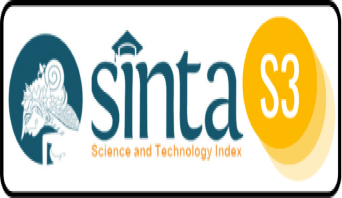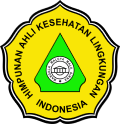GAMBARAN PENGELOLAAN LIMBAH MEDIS PADAT DI RUMAH SAKIT Hi MUHAMMAD YUSUF KALIBALANGAN KOTABUMI TAHUN 2019
DOI:
https://doi.org/10.26630/rj.v15i2.2808Keywords:
Solid medical waste, waste management, hospitalAbstract
Hi Muhammad Yusuf Hospital produces about 2.4 kg of solid medical waste per day. The initial survey results found that solid medical waste has not been appropriately managed, even though this waste can be a source of health problems for the community. This study aimed to describe the management of solid medical waste at the Hi Muhammad Yusuf Hospital, Kalibalangan, Kotabumi. This research describes the management of solid medical waste from source, type, weight, sorting, container, collection, and temporary storage. Data were collected through observation and interviews with medical waste management officers. Furthermore, the data is compared with Minister of Health Regulation No. 7 of 2019. Solid medical waste management is declared to meet the requirements if it is following the regulation. The process of sorting, storing, and transporting hospital waste does not meet the requirements. There is still solid medical waste mixed with non-medical waste. Hospitals need to provide medical bags in brown for pharmaceutical waste, red for radioactive waste, and purple for cytotoxic waste. Training for waste management officers is needed to improve understanding of solid medical waste management and the availability of SOPs as a guide for waste management officers.References
Aini, F. (2019). Pengelolaan Sampah Medis Rumah Sakit atau Limbah B3 (Bahan Beracun dan Berbahaya) di Sumatera Barat. Jurnal Education And Development, 7(1), 13–24.
Andarnita, A. (2012). Faktor-faktor yang mempengaruhi Pengelolaan Sampah Medis di Badan LAyanan umum Daerah Rumah Sakit Umum Daerah dr. Zainoel Abidin Banda Aceh Tahun 2012. Jurnal Kesehatan Masyarakat, 16.
Fattah, N., Mallongi, A., & Arman. (2007). Studi Tentang Pelaksanaan Pengelolaan Sampah Medis Di Rumah Sakit. Makasar: Fakultas kedokteran Universitas Hasanudin.
Hasanah, L., & Oktavianisya, N. (2018). Gambaran Pengelolaan Limbah Medis Padat pada Pos Kesehatan Desa (Poskesdes) di Kecamatan Bluto. Gorontalo Journal of Public Health, 1(2), 65. https://doi.org/10.32662/gjph.v1i2.333
Herman, P., & Nopriadi. (2020). Analisis Pengelolaan Limbah Medis Padat Untuk Mewujudkan. 7(1), 43–52.
Keman, S., & Triana, N. (2006). Evaluasi Pengelolaan Sampah Padat di Rumah Sakit Umum Haji Surabaya. Jurnal Kesehatan Lingkungan Unair, 3(1), 3964.
Kementerian Kesehatan RI. (2017). Informasi kesehatan indonesia 2017. In Kementerian Kesehatan RI (Vol. 1).
Kementerian Kesehatan RI. Peraturan Menteri Kesehatan RI Nomor 7 Tahun 2019 Tentang Kesehatan Lingkungan Rumah Sakit. , 26 Kemenkes RI § (2019).
Kementerian LHK. Peraturan Menteri LHK No. 56 tahun 2015 tentang Tata Cara dan Persyaratan Teknis Pengelolaan Limbah Bahan Berbahaya dan Beracun dari Fasilitas Pelayanan Kesehatan. , Biro Hukum KLHK RI § (2015).
Kementerian LHK. (2018). Peta Jalan (Roadmap) Pengelolaan Limbah B3 dari Fasilitas Pelayanan Kesehatan (Fasyankes). KemenLHK, 1–1, 1–2, 3–22, 3–30.
Kementerian LHK. (2020). Peraturan Menteri Lingkungan Hidup dan Kehutanan Republik Indonesia No P.12/MENLHK/SETJEN/PLB.3/5/2020 Tentang Penyimpanan Limbah Bahan Berbahaya Dan Beracun. 1–52.
Lagimpe, S. H. A., Miswan, M., & Jufri, M. (2018). Sistem Pengolahan Sampah Medis Dan Non Medis Di Rumah Sakit Umum Daerah Poso. Jurnal Kolaboratif Sains, 1(1).
Pertiwi, V., Joko, T., & Dangiran, H. L. (2017). Evaluasi Pengelolaan Limbah Bahan Berbahaya Dan Beracun (B3) Di Rumah Sakit Roemani Muhammadiyah Semarang. Jurnal Kesehatan Masyarakat (e-Journal), 5(3), 420–430.
PP No 101 tahun 2014. Peraturan Pemerintah RI No. 101 Tahun 2014 tentang pengelolaan Limbah Bahan Berbahaya dan Beracun. , (2014).
Purwanti, A. A. (2018). Pengelolaan Limbah Padat Bahan berbahaya dan Beracun (B3) Rumah Sakit di RSUD Dr. Soetomo Surabaya. Jurnal Kesehatan Lingkungan, 10(3), 291–298.
Pyopyash, E. L., Nurjazuli, & Yunita, N. A. (2019). Kajian Pengelolaan Sampah Medis Di Rumah Sakit X Cilegon. Jurnal Kesehatan Masyarakat (e-Journal), 7(3), 150–155.
Ramon, A., Husin, H., & Elianto, R. (2018). Analisis Pengelolaan Limbah Medis Padat di Rumah Sakit Umum Daerah Kabupaten Mukomuko. Jurnal IImiah, 14(3), 1–63.
RS. Hi. M. Yusuf. (2019). Profil Rumah Sakit Hi Muhammad Yusuf Kalibalangan Kotabumi. Kotabumi: RSU. Hi. M. Yusuf.
Satiti, A., Wigati, P., & Fatmasari, E. (2017). Analisis Penerapan Standard Precautions Dalam Pencegahan Dan Pengendalian Hais (Healthcare Associated Infections) Di Rsud Raa Soewondo Pati. Jurnal Kesehatan Masyarakat Universitas Diponegoro, 5(1), 40–49.
Sholihah Mar’atus Enny, Sjaaf, A. C., & Djunawan, A. (2020). Evaluasi Pengelolaan Limbah Medis Di Rumah Sakit Sentra Medika Cikarang Medical Waste Management Evaluation at Sentra Medika Hospital Cikarang Health Policy and Administration Postgraduate Program , Department Faculty of Public Health , Universitas Indone. Manajemen Kesehatan, 7(1), 105–114.
Widiarti, W., Simanjuntak, E., & Sitorus, M. E. (2019). Evaluasi Manajemen Pengelolaan LImbah Medis Padat Infeksius di Rumah Sakit Umum Deli Serdang Kecamatan Lubuk Pakam Kabupaten Deli Serdang. Journal of Chemical Information and Modeling, 3(3), 2550–0414. https://doi.org/10.1017/CBO9781107415324.004
Yolarita, E., & Kusuma, D. W. (2020). Hospital Medical Waste Management in West Sumatera during COVID-19 Pandemic. Jurnal Ekologi Kesehatan, 19(3), 148–160.
Zuhriyani. (2019). Analisis Sistem Pengelolaan Limbah Medis Padat Berkelanjutan di Rumah Sakit Umum Raden Mattaher Jambi. Jurnal Pembangunan Berkelanjutan, 1.(1), 40–52.
Downloads
Published
How to Cite
Issue
Section
License
Copyright (c) 2021 Ruwa Jurai: Jurnal Kesehatan Lingkungan

This work is licensed under a Creative Commons Attribution-NonCommercial 4.0 International License.

Ruwa Jurai: Jurnal Kesehatan Lingkungan is licensed under a Creative Commons Attribution-NonCommercial 4.0 International License.
Authors who publish with this journal agree to the following terms:
- Authors retain copyright and grant the journal right of first publication with the work simultaneously licensed under a Creative Commons Attribution-Non Commercial License that allows others to share the work with an acknowledgment of the work's authorship and initial publication in this journal.
- Authors are able to enter into separate, additional contractual arrangements for the non-exclusive distribution of the journal's published version of the work (e.g., post it to an institutional repository or publish it in a book), with an acknowledgment of its initial publication in this journal.
- Authors are permitted and encouraged to post their work online (e.g., in institutional repositories or on their website) prior to and during the submission process, as it can lead to productive exchanges, as well as earlier and greater citation of published work.









